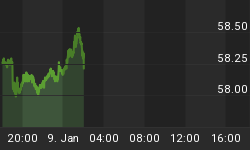Whew! Including all items, the July PCE price index advanced 0.3% month to month. Excluding food and energy, it was up just 0.1% after three consecutive months of 0.2% increases. On a year-over-year basis, the all-items PCE price inflation rate moderated marginally from 3.5% in June to 3.4% in July (see Chart 1). If recent days' energy price declines hold, then the Fed can look forward to lower year-over-year all-items consumer inflation going forward. The year-over-year change in the core PCE price index for July held at its June rate of 2.4% (rounded). Although still above the Fed's implicit target range, at least it did not move even farther out of range. Because of a pick up in month-to-month core price increases in September and October of 2005, year-over-year comparisons could become more benign in the months ahead.
Chart 1
The increase in core consumer inflation is largely attributable to faster increases in the rent of shelter (see Chart 2). Outright price deflation continues to be the story for consumer durable goods. The pace of increases in the rent of shelter is likely to moderate once all of the condos currently under construction are completed. Both the developers with unsold units and the spec buyers will be giving away high speed Internet access along with three months of free rent to fill these urban see-throughs.
Chart 2
Q3 Consumption Off To Strong Start, But ...
Adjusted for prices, personal consumption expenditures jumped 0.5% in July. Increases were reported for all major categories - durable goods, nondurable goods and services. Consumption got a big lift from the 3.25% (month-to-month) increase in sales of motor vehicles and parts. That's not likely to be repeated in August, which we will find out about on Friday. The consensus, which occasionally is right, is looking for a drop in car and truck sales for August. Moreover, when seasonally adjusted, same-store sales for the chains in August were reputed to be down 0.6% by the folks at ICSC after having increased 1.1% in July. Unless households totally boycott the malls and car dealer lots, real consumption growth is likely to be somewhat better than the second quarter's 2.6% annualized - around 3% or a touch above. But as the chart below shows, the trend is not the retailers' friend anymore.

















